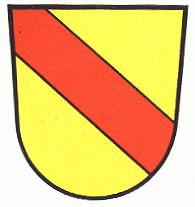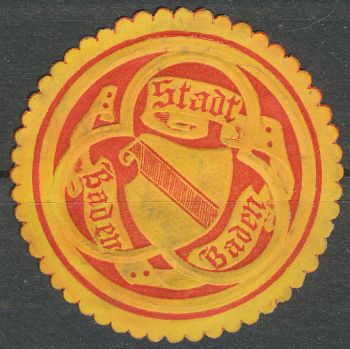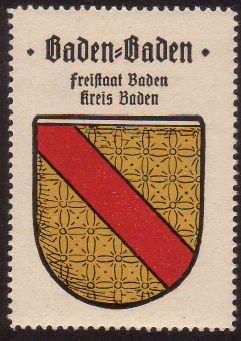Baden-Baden: Difference between revisions
Knorrepoes (talk | contribs) No edit summary |
Knorrepoes (talk | contribs) m (Text replace - "|width="15%"|50 px|right |}" to "|width="15%"|50 px|right |}<seo title="Wappen, Gemeindewappen" />") |
||
| Line 3: | Line 3: | ||
|width="70%" align="center" |'''Heraldry of the World<br/>Civic heraldry of [[Germany]] - [[Deutsche Wappen|Deutsche Wappen (Gemeindewappen/Kreiswappen)]]''' | |width="70%" align="center" |'''Heraldry of the World<br/>Civic heraldry of [[Germany]] - [[Deutsche Wappen|Deutsche Wappen (Gemeindewappen/Kreiswappen)]]''' | ||
|width="15%"|[[File:Germany.jpg|50 px|right]] | |width="15%"|[[File:Germany.jpg|50 px|right]] | ||
|} | |}<seo title="Wappen, Gemeindewappen" /> | ||
Revision as of 16:43, 5 November 2012
| Heraldry of the World Civic heraldry of Germany - Deutsche Wappen (Gemeindewappen/Kreiswappen) |
BADEN-BADEN
State : Baden-Württemberg
Urban District (Kreisfreie Stadt) : Baden-Baden
Additions : 1909 Beuern, Lichtental; 1928 Oos, Oosscheuern; 1939 Balg; 1972 Ebersteinburg, Neuweier, Steinbach, Varnhalt; 1973 Haueneberstein; 1975 Sandweier
Origin/meaning
The village became around 1100 a possession of Hermann II of the Zähringen family, who named himself after the town, Count of Baden. During the 13th century the town received city rights and became the capital of the County of Baden, since 1535 of the branch Baden-Baden. It remained the capital until the early 18th century.
The city has always used the arms of the Counts of Baden as its arms. The oldest known seal dates from the 14th century, but is known only since 1421. The arms thus have never changed since. To distinguish the arms of the city from those of the Duchy and State of Baden, the city often used a mural crown, but this was never officially approved.
| Seal from around 1900 |
The arms in the Kaffee Hag albums +/- 1925 |
Literature : Stadler, K., 1964-1971; John et al., 1990



